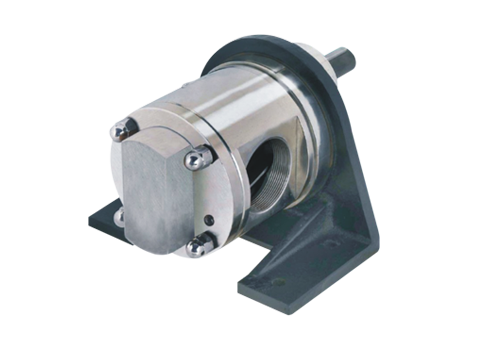A Full Review of Gear Pump Machinery
Gear Pump is mainly divided based on the delivery pressure, a rate of flow of fluids, output mechanism and the basis of mechanical. There are four types of rotary pumps - screw, lobe, gear, and vane. The operating mechanism of screw pump does vary from those of the other three types.
However, all the rotary pumps operate on the same rule - use of rotating elements to pump liquid. The elements vary - screws, gears, vanes, and lobes.
Rotary Gear Pump
Rotary Gear Pump operates on the principle that a rotating vane, screw, or gear traps the liquid in the suction side of the pump casing and forces it to the discharge side of the casing. These pumps are essentially self-priming due to their capability of removing air from suction lines and producing a high suction lift. In pumps designed for systems requiring a high suction lift and self-priming features, it is essential that all clearances between rotating parts, and between rotating and stationary parts, be kept to a minimum in order to reduce slippage. Slippage is leakage of fluid from the discharge of the pump back to its suction.
Due to the close clearances in rotary pumps, it is necessary to operate these pumps at relatively low speed in order to secure reliable operation and maintain pump capacity over an extended period of time.
Otherwise, the erosive action due to the high velocities of the liquid passing through the narrow clearance space would soon cause excessive wear and increased clearances, resulting in slippage.
There are many types of positive displacement rotary pumps, and they are normally grouped into three basic categories that include gear pumps, screw pump, and moving vane pumps.
Stainless Steel Rotary Pump
The Stainless Steel Rotary Pump shown below is another type of positive displacement pump used. The pump consists of a cylindrically bored housing with a suction inlet on one side and a discharge outlet on the other. A cylindrical type rotor with a diameter smaller than the cylinder is driven around an axis placed over the center line of the cylinder.
The clearance amongst rotor and barrel is little at the top but increases at the bottom. The rotor carries vanes that move in and out as it rotates to maintain sealed spaces between the rotor and the cylinder wall. The vanes trap liquid or gas on the suction side and carry it to the discharge side, where constriction of the space ousts it through the release line. The vanes may swing on pivots, or they may side in slots in the rotor.
Hydrostatic Pumps
Hydrostatic Pumps are used to convert fluid power into mechanical power. Hydraulic pumps are used as a source of fluid flow. When the pressure within the associated system builds to the level required to overcome system mechanical load then the pressure will drop as the fluid begins to travel through devices performing mechanical work.
Many Hydrostatic pumps and motors are reversible. Not all pumps are capable of operating in opposing directions of rotation due to a design limitation of seals and rotational mechanism. Hydrostatic pumps are available and designed to operate at most desired speeds.
Know more about gear oil pump and its working fundamental many gear pump manufacturers are well-known in gear pump industries such as marutipump.com, which provide all detail of different kind of gear oil pumps in Industries.
